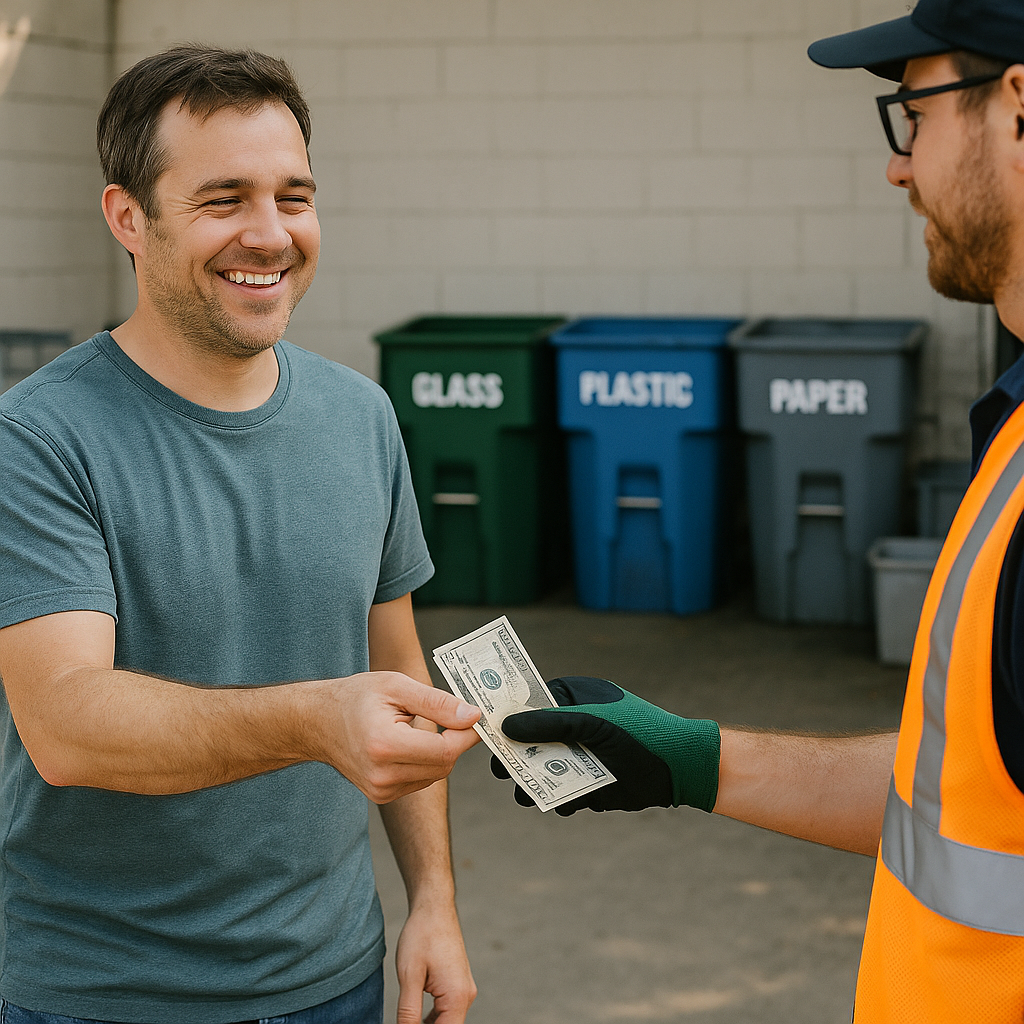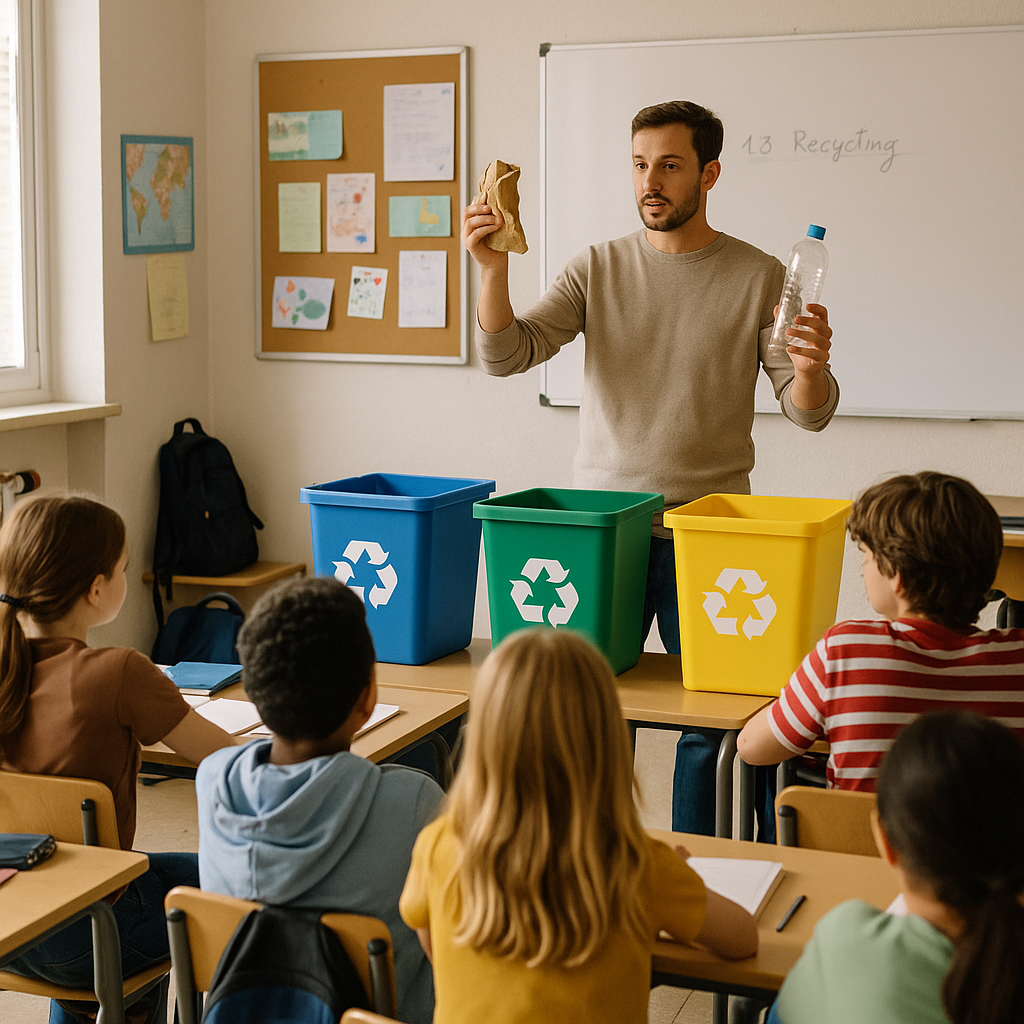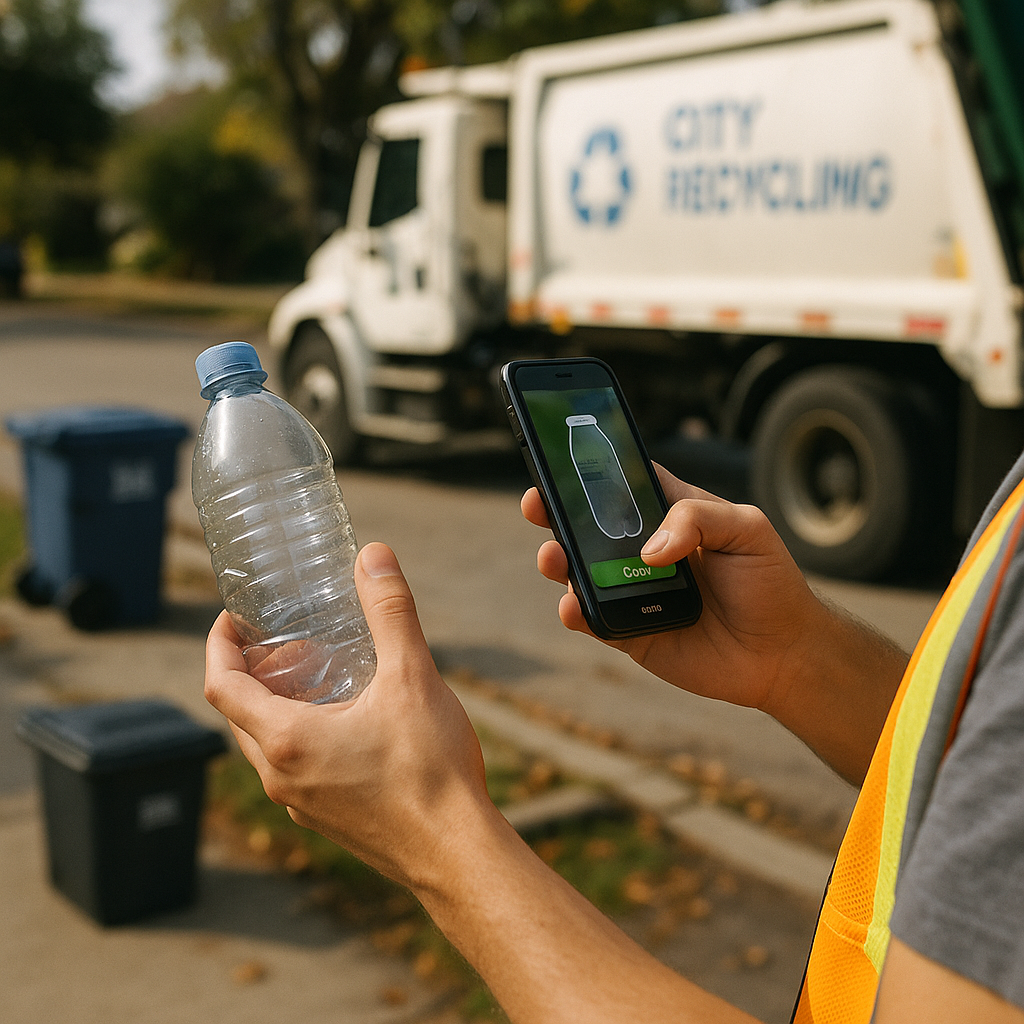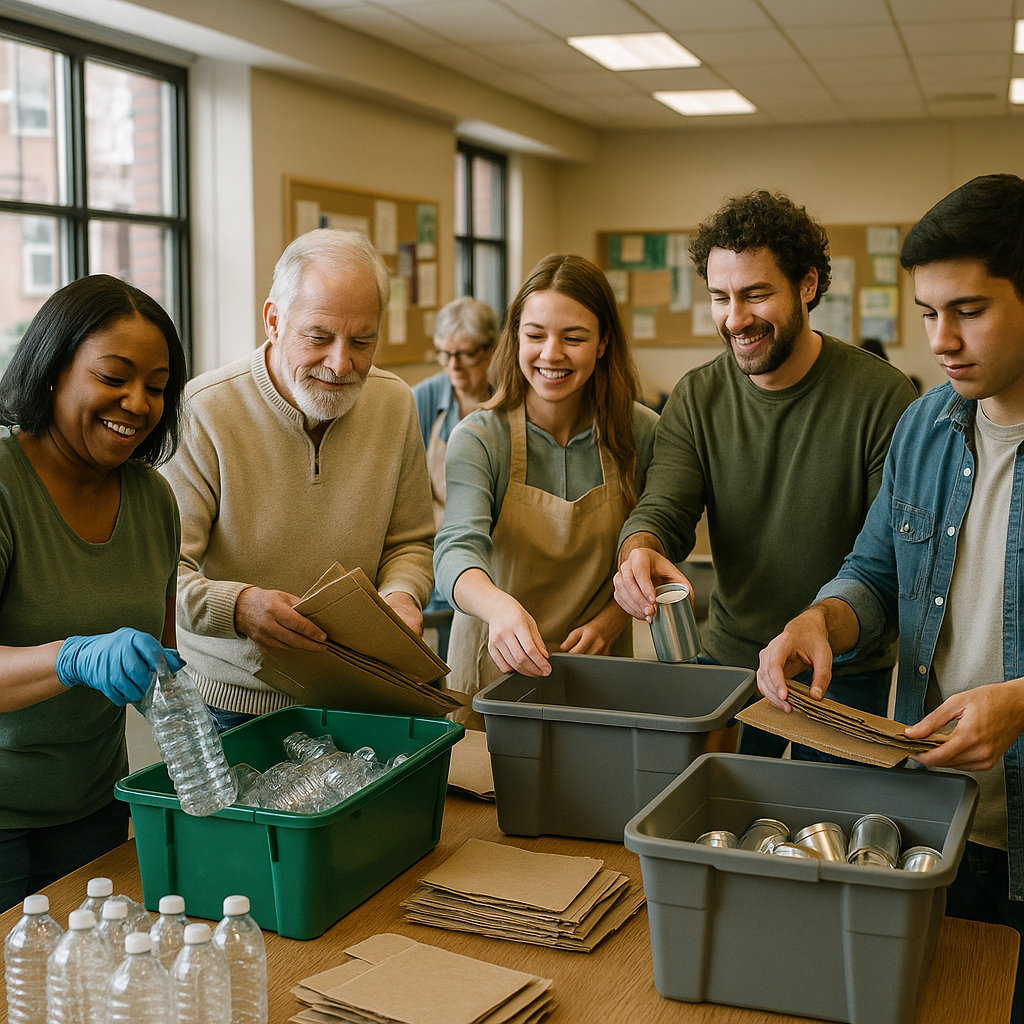5901 Botham Jean Blvd, Dallas, TX 75215
What Are Incentives for Community Scrap Recycling?
May 16, 2025Over 9 million tons of metal waste end up in American landfills annually, representing valuable resources that could be recycled instead of being permanently lost. Community scrap recycling incentives offer a solution to this environmental challenge.
These incentives are strategic approaches designed to increase participation in local metal recycling programs. They transform routine recycling activities into engaging, community-building opportunities that deliver tangible benefits to participants.
Effective incentives align with sustainability values while making recycling more appealing. Recognition-based rewards highlight community champions through local media features and appreciation events. Financial incentives direct proceeds toward community improvements like playground equipment or environmental education programs. Educational incentives such as scholarships connect recycling directly to community betterment.
How Can Financial Incentives Boost Community Recycling?

Community-focused financial incentives have become effective motivators for recycling participation. Unlike individual rewards, these incentives create a shared interest in recycling success by channeling proceeds into visible community improvements.
When communities witness tangible benefits from collective recycling efforts, participation rates often rise. Financial incentives that fund local projects establish a direct link between recycling actions and community enhancement, fostering both environmental responsibility and community pride.
Community Project Funding Models
Scrap drive fundraisers are among the most successful community incentive models. These events collect recyclable materials like metals, electronics, and paper, with proceeds funding specific community needs rather than rewarding individuals.
Local governments can enhance these initiatives by offering matching funds. When municipalities match proceeds from community recycling efforts, they effectively double the impact, demonstrating institutional support for grassroots initiatives.
Research from Finland shows that financial incentives significantly influence recycling behavior. Each community should tailor its approach to local conditions and needs, with effective programs maintaining transparency about fund usage and community benefits.
Successful Community Projects
Purchasing playground equipment is a popular use of recycling proceeds. Communities can link their recycling efforts to new slides, swings, and climbing structures, providing a tangible reward for participation.
Community gardens funded through recycling initiatives offer both environmental and social benefits, creating green spaces and producing local food. Residents can see the results of their recycling efforts growing in their neighborhoods.
Environmental education programs funded by recycling proceeds foster sustainable behavior changes. These programs teach future generations about waste reduction and resource conservation, with schools using funds for field trips, educational materials, and hands-on learning activities.
Public space improvements like benches, trash receptacles, and beautification projects provide visible benefits from recycling income, enhancing quality of life while reinforcing the community benefits of recycling participation.
Implementation Strategies
Successful community incentive programs require clear communication about goals and benefits. Residents need to understand how their participation directly contributes to community improvements, with regular updates on collection totals, proceeds, and funded projects helping maintain engagement.
Partnerships with local businesses can enhance community recycling incentives, with companies offering matching donations or in-kind contributions to recycling-funded projects. These collaborations amplify the impact of community recycling efforts.
Public celebrations of completed projects create awareness and appreciation. Events showcasing new playground equipment, garden spaces, or other improvements highlight the connection between recycling and community benefits, recognizing contributions while encouraging continued participation.
Small communities can implement cooperative collection initiatives with neighboring towns, pooling resources to increase recycling volume and efficiency. Shared proceeds can fund projects benefiting multiple communities, extending the impact of recycling incentives.
What Recognition-Based Incentives Work Best?
Recognition-based incentives are powerful motivators for recycling participation. Unlike financial rewards, these incentives appeal to our desire for social approval and community belonging. When individuals see their recycling efforts publicly acknowledged, it inspires others to join the movement.
Public recognition through local media offers a compelling way to spotlight recycling champions. Communities that feature top recyclers in newspapers, social media, or newsletters create visible role models. This visibility turns everyday recycling actions into noteworthy achievements. Seoul effectively demonstrates this by tracking residents’ recycling contributions and publicly recognizing top performers.
Appreciation events create opportunities to celebrate recycling successes collectively. Annual ceremonies where certificates, plaques, or trophies are presented to dedicated recyclers reinforce the value of these efforts. These events bring community members together, building relationships around shared environmental values and fostering community pride while promoting sustainable practices.
Monthly or quarterly recognition programs maintain momentum for recycling initiatives. Regular acknowledgment of “Top Recyclers” in community spaces keeps engagement steady and encourages healthy competition. These consistent recognition cycles keep recycling at the forefront of community consciousness and provide regular opportunities for new participants to be celebrated.
Recognition programs for schools and businesses extend the impact beyond individuals. Competitions between classrooms or departments generate enthusiasm, while educational institutions and companies recognized for their recycling achievements often become sustainability ambassadors. They frequently develop innovative approaches that can be replicated elsewhere.
Social media recognition campaigns harness digital platforms to amplify recycling success stories. Creating dedicated hashtags for community recycling efforts enables residents to share their contributions and build an online community around sustainability. These digital acknowledgments expand the reach of recognition programs and engage younger demographics.
Community-wide recycling challenges with public leaderboards combine recognition with friendly competition. Towns or neighborhoods might compete to achieve the highest recycling rates, with progress tracked in visible locations. Winners receive public acknowledgment and sometimes grants for community environmental projects. This approach motivates entire neighborhoods to work together toward common sustainability goals.
The most effective recognition programs share key characteristics: they are consistent, visible, and authentic. Recognition must be regular enough to maintain interest but selective enough to remain meaningful. It should be prominently displayed where community members will notice it, and it must genuinely celebrate real achievements rather than token participation.
Simple signage programs that identify households or businesses as “Recycling Champions” with yard signs or window decals serve as daily visual reminders of community values. These visible symbols create neighborhood conversations about recycling practices and establish new social norms around proper waste management.
Ultimately, recognition-based incentives work because they transform recycling from an individual chore into a community achievement. The public acknowledgment of these efforts reinforces the collective impact of individual actions, creating momentum for broader participation in sustainability initiatives.
When community members see their neighbors celebrated for recycling excellence, it normalizes these behaviors and establishes them as aspirational. Recognition programs don’t just reward current participants—they inspire new ones, creating a self-reinforcing cycle of community engagement in environmental stewardship.
| Incentive Type | Benefits |
|---|---|
| Public Recognition | Spotlights recycling champions, inspires community participation, creates visible role models |
| Appreciation Events | Celebrates collective recycling successes, builds community relationships |
| Monthly Recognition Programs | Maintains engagement, creates healthy competition |
| School and Business Recognition | Generates enthusiasm, fosters sustainability ambassadors |
| Social Media Campaigns | Amplifies success stories, engages younger demographics |
| Community Challenges | Motivates neighborhoods, tracks progress with leaderboards |
How Do Educational Incentives Promote Sustainable Recycling?

Educational incentives are powerful motivators that transform recycling from a civic duty into an engaging activity with lasting impact. Scholarships, school supplies, and grants offered through recycling programs create a direct link between environmental action and academic advancement. Students participating in collection drives or sustainability projects gain immediate rewards and valuable lessons about resource conservation.
Schools implementing curriculum-based recycling programs often see higher participation rates when educational incentives are involved. For instance, competitions to collect recyclable materials can award the winning group with new learning resources or field trip opportunities. This approach teaches students proper recycling techniques while highlighting the tangible benefits of collective environmental action.
Community-sponsored scholarship programs tied to recycling initiatives demonstrate a strong commitment to both educational advancement and environmental stewardship. High school students leading recycling campaigns or developing innovative waste reduction solutions may qualify for college scholarships. These programs cultivate leadership skills and environmental consciousness that extend beyond the immediate benefit of financial assistance.
Integrating educational workshops alongside incentive programs multiplies their effectiveness. When communities host sessions explaining the environmental impact of waste, participants develop a deeper understanding of why recycling matters. This knowledge empowers families to make informed decisions about consumption and disposal. Combining these learning opportunities with school supply rewards creates a comprehensive approach addressing both immediate needs and long-term environmental goals.
Educational incentives also foster generational change in recycling habits. When children bring home knowledge about sustainability from school programs offering academic rewards, they often influence family practices. Parents who might not prioritize recycling become more engaged when they see their children’s education benefiting from these efforts. This ripple effect extends the impact of educational incentives throughout the community.
The financial aspect of educational incentives cannot be overlooked. For many families, the prospect of earning school supplies or scholarships through recycling participation represents a practical solution to educational expenses. This economic motivation often serves as the initial reason for participation, while the environmental benefits become more apparent over time. The dual advantage creates sustainable engagement that might not exist with environmental messaging alone.
Educational institutions that incorporate recycling into science projects allow students to track the impact of their efforts while earning academic credit. This approach makes abstract environmental concepts concrete by showing how individual actions contribute to measurable results. When these projects are connected to educational rewards like improved grades or recognition, students develop both environmental awareness and critical thinking skills simultaneously.
The long-term value of educational incentives extends beyond immediate participation rates. Students who associate recycling with educational opportunity develop a framework connecting environmental responsibility with personal advancement. This mindset typically leads to continued environmental stewardship throughout adulthood, creating lasting change in consumption and disposal habits that benefit communities for generations.
What Digital Strategies Enhance Community Recycling Programs?

Social media platforms have changed how communities engage with recycling initiatives. Facebook, Instagram, and Twitter offer channels to share infographics about proper recycling practices and showcase successful community efforts. Regular posts featuring local recycling achievements create momentum and foster community pride. These platforms also enable real-time discussions about available recycling options within the neighborhood.
Mobile applications offer convenience that traditional recycling education cannot match. Apps with features like collection day reminders eliminate confusion about pickup schedules. Some applications include barcode scanning functionality that instantly tells users whether an item is recyclable in their area. Location-based services direct residents to the nearest drop-off points for specialized items like e-waste or hazardous materials.
Email newsletters deliver timely updates directly to community members. Regular communications about collection progress help residents see their collective impact. Newsletters can announce special recycling events, explain program changes, and highlight successful waste reduction achievements. These direct communications maintain consistent engagement with recycling initiatives throughout the year.
Digital tools enhance data collection and program improvement. Online surveys gather valuable feedback about recycling challenges faced by community members. Digital tracking systems monitor participation rates and contamination issues across different neighborhoods. This data helps municipalities adjust their programs for maximum effectiveness and target areas needing additional support.
Interactive educational content makes learning about recycling more engaging. Online quizzes test and improve residents’ knowledge about proper sorting. Video tutorials demonstrate correct preparation of recyclables, reducing contamination issues. Digital games introduce recycling concepts to younger community members, building lifelong sustainable habits.
Real-time updates through digital channels create urgency and motivation. Push notifications alert residents about upcoming special collection events. Community recycling dashboards display progress toward collective goals. Digital leaderboards recognize neighborhoods with high participation rates, creating friendly competition that drives increased engagement.
Leveraging Social Media for Community Engagement
Strategic social media campaigns specifically designed for recycling initiatives yield impressive results. Targeted content that highlights good recycling practices reaches residents where they already spend time online. Environmental organizations can partner with local influencers to amplify recycling messages. Creating recycling-focused online communities allows members to share tips and success stories.
Hashtag campaigns unite community efforts under a common theme. Visual content showing proper sorting techniques performs particularly well on platforms like Instagram. Live streams of recycling facility tours demystify what happens after collection. Regular Q&A sessions address common misconceptions about local recycling programs.
Mobile Solutions for On-the-Go Recycling
Purpose-built recycling apps solve common participation barriers. GPS-enabled applications direct users to specialized recycling facilities for items like batteries or electronics. Some apps gamify the recycling experience, awarding points for consistent participation. Integration with municipal waste management systems provides accurate, up-to-date information about acceptable materials.
Mobile solutions particularly benefit multi-family housing communities where recycling participation typically lags. Digital tools help overcome space limitations with creative storage solutions. Apps connecting neighbors facilitate shared recycling trips to drop-off centers. Mobile platforms enable property managers to communicate program updates efficiently.
The accessibility of digital tools makes recycling more inclusive. Translation features in recycling apps overcome language barriers in diverse communities. Voice-enabled functions ensure those with visual impairments can access recycling information. Location services help identify accessible recycling points for residents with mobility challenges.
Conclusion: Maximizing Community Participation in Scrap Recycling

Community scrap recycling initiatives succeed when they offer various incentives appealing to different motivations. Financial incentives directed toward community projects create visible benefits that residents can appreciate. Recognition-based rewards, such as featuring active participants in local media, build community pride and showcase environmental leaders. Educational incentives, like scholarships or school supplies, connect recycling efforts to community improvement, reinforcing the value of environmental stewardship.
These approaches foster a sustainable recycling culture that strengthens entire neighborhoods. When communities implement diverse incentives alongside strategic collection locations and clear educational materials, participation rates rise significantly. This comprehensive approach transforms occasional recyclers into dedicated environmental stewards, providing tangible benefits from reduced landfill waste to conserved natural resources. For assistance with your local scrap recycling program, contact Okon Recycling at 214-717-4083.
